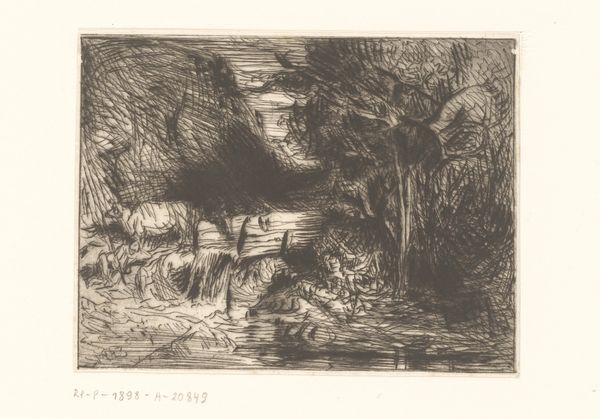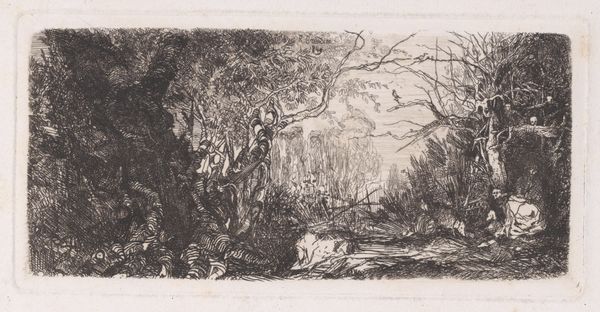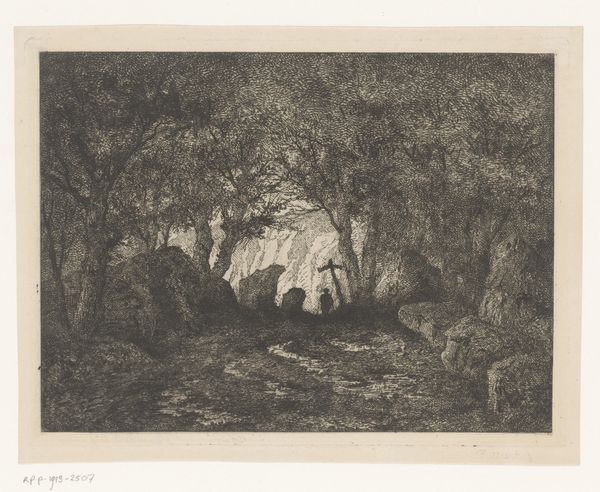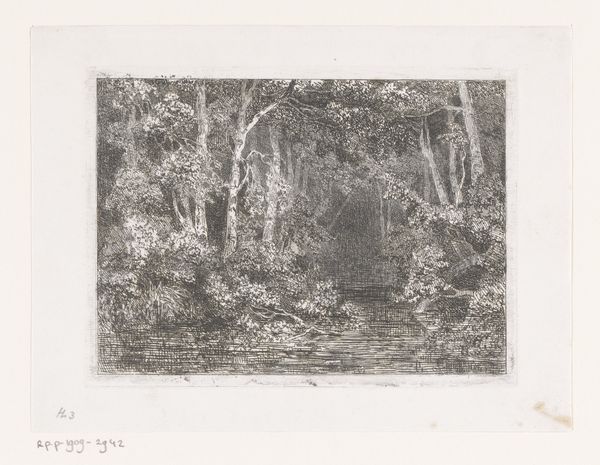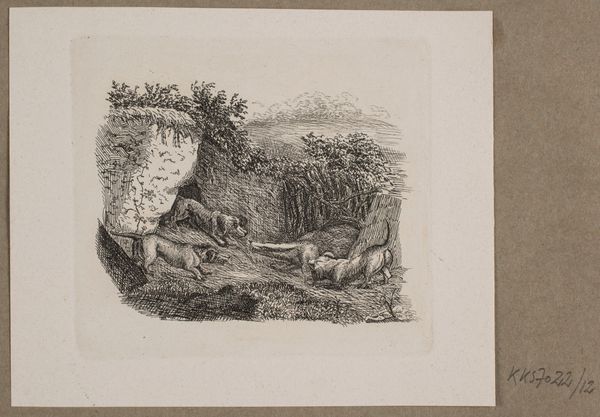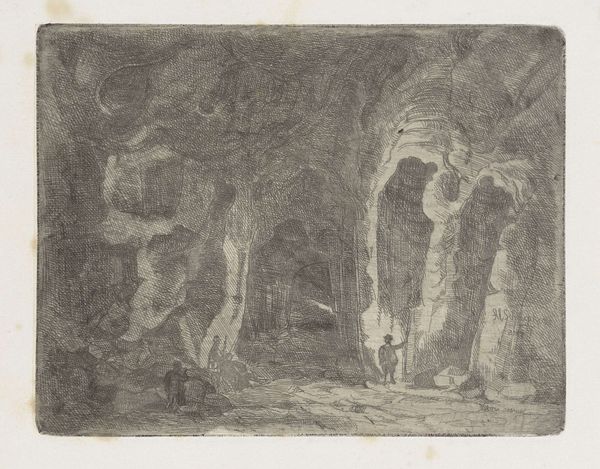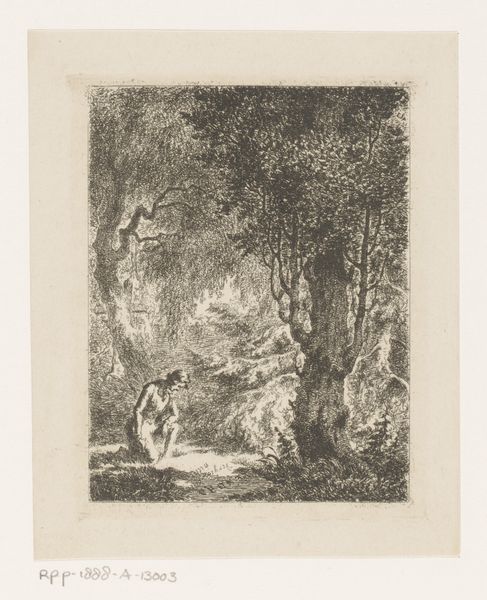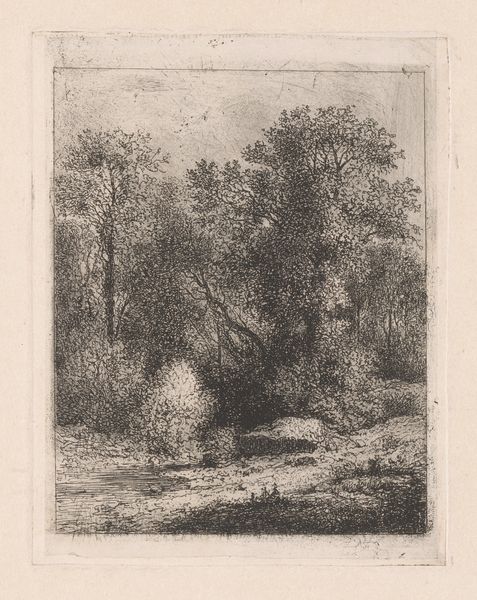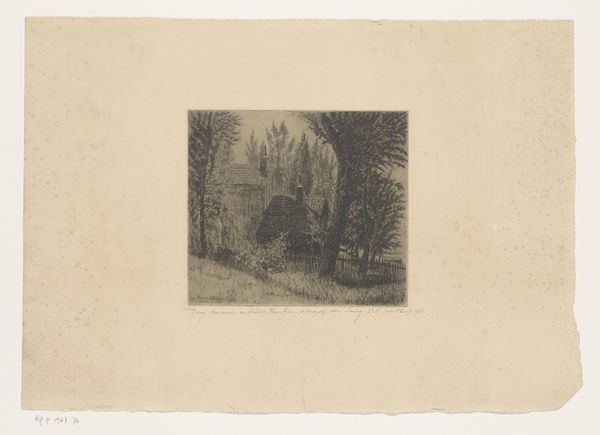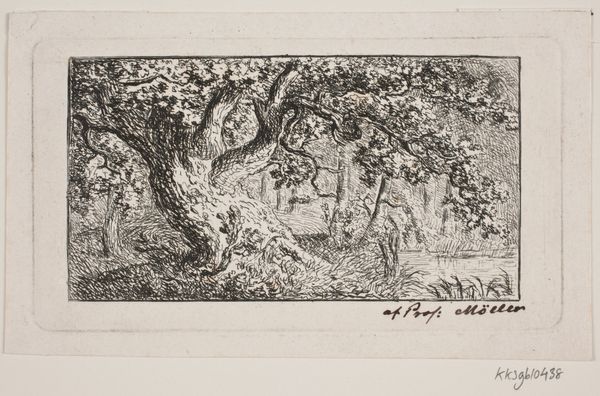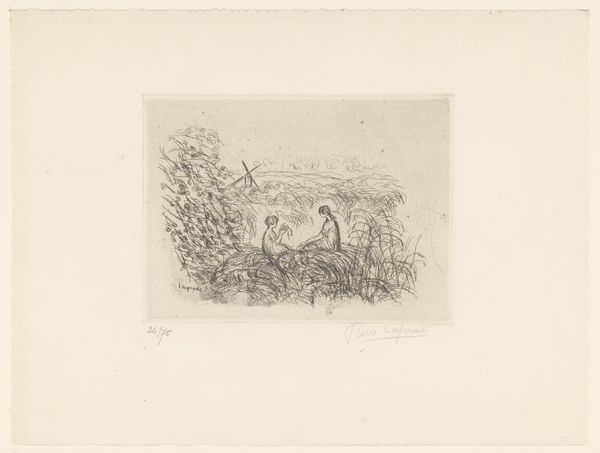
drawing, print, engraving
#
drawing
# print
#
landscape
#
line
#
engraving
Dimensions: 37 mm (height) x 66 mm (width) (plademaal)
Curator: This is J.P. Møller's "Skovinteriør", or "Forest Interior," an engraving from 1829, housed here at the SMK. Editor: It’s striking! The sheer density of lines really evokes a damp, cool feeling— almost primordial. The trunks feel monumental despite the print’s small size. Curator: Absolutely, and it’s important to understand that the romantic ideal of the forest was very much in vogue during this period, and across Europe you can find similar works of art. The forest was often considered an almost sacred space. Editor: It certainly challenges traditional ideas around craft and art. What’s intriguing is the labor involved in creating such an intricate engraving. Can you imagine the repetitive motion and skill needed to carve these minuscule lines? It’s a tangible expression of physical labor in a world increasingly driven by industry. Curator: Precisely. Møller isn’t just depicting a forest; he's engaging with the broader narratives surrounding nature and identity at the time. Denmark was in the midst of forging a national identity and a relationship with the natural world was important. Editor: Right, the act of making— the direct connection between hand, tool, and material— highlights a profound relationship with the earth itself. And that connection is mediated by the act of material transformation through labor. Curator: Indeed. When viewed from this perspective, the artwork moves from just depicting the beauty of the forest, to telling the story of the complicated human connection to it. I believe he’s touching on an ideal that permeates many facets of early 19th-century art. Editor: Well said. Seeing the world around us not just as landscape but also as cultural artifact opens our eyes to an artwork’s complexity and layered narrative. Curator: Agreed. We learn a lot by approaching from these varied angles. Editor: Each speaks to the concerns of different moments, so we arrive with something closer to totality than we expected.
Comments
No comments
Be the first to comment and join the conversation on the ultimate creative platform.

